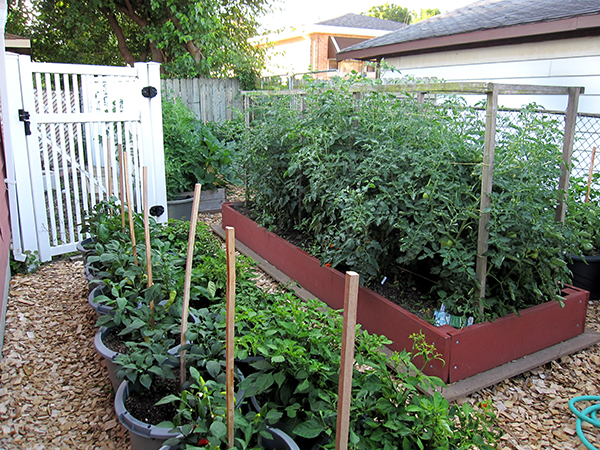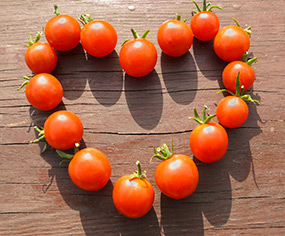Tomato Talk
A Full Season of Tomato-Growing Information

Raised-bed tomatoes benefit from "square-foot gardening"—plant one plant per square foot to ensure space for growth and air movement.
Fertilizing Tomatoes
Do you need to fertilize tomatoes?
Yes. Tomatoes are heavy feeders and need nutrients. Even if you are not fertilizing regularly, consider a midsummer boost of organic fertilizer when plants begin to flower and set fruit. Give container-grown tomatoes light but frequent applications of liquid 5-10-10 fertilizer—about every two to three weeks, or feed them a shovelful of compost. Tomatoes like calcium, too—try working crushed eggshells into the soil to increase calcium content.
What is the difference between a synthetic and a natural fertilizer?

Natural fertilizers are organic products that have been extracted from living things or from the earth. They can be either plant-derived or animal-derived. Some examples are mushroom manure, blood meal, bone meal, cottonseed meal, kelp meal, poultry or horse manure (aged), and compost.
Synthetic fertilizers are those composed of the synthesized chemicals of nitrogen, phosphorus, and potassium. In general, natural fertilizers contain lesser amounts of N-P-K than their synthesized counterparts, so you need to use more of them to supply the plant with the required amount of nitrogen, phosphorus, or potassium. However, because natural fertilizers add vital organic matter, they also improve soil texture—an important advantage.
If the soil is rich with compost, leaf mold, or other organic material, synthetic fertilizers should be unnecessary. But this is a gardener's call. If you feel your tomatoes are lacking, side-dress the plants with a balanced fertilizer.
How do I make a wonderful organic fertilizer brew like manure tea, and how much do I use on my crops?
This liquid is used at transplant time, and again every three weeks or so. Fresh manure from horses, sheep, or cows is "soaked" in water at the rate of one part manure to ten parts water for several days to one week. The manure is then strained through burlap, sacking, or cheesecloth, and the resulting tea water becomes the concentrate of your liquid fertilizer. Since the theory of "less is more" holds true with fertilizing—especially for tender young vegetable transplants—dilute this liquid even further until it is the color of a pale herbal tea.

